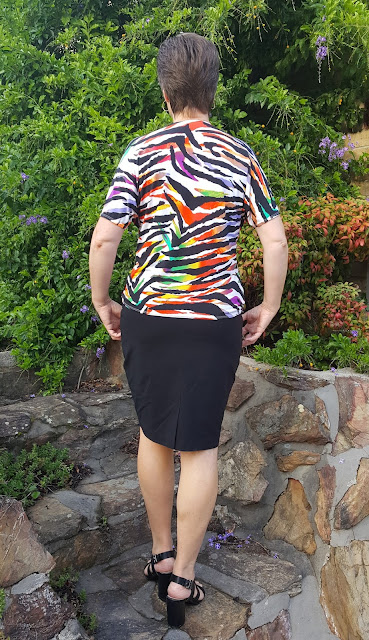 |
| Style Arc Ginger Knit Top |
I've used this outrageously multicoloured knit from Knitwit to create another Style Arc Ginger Knit Top. The fabric is still available and is currently on sale for $12 per metre. This is my third time sewing this pattern, and I doubt it will be my last. Here are the links to my first version and second version. It's just perfect for work, loose fitting, comfortable yet stylish and works well with pants or a skirt.
 |
| Style Arc Ginger Knit Top |
I sewed this up on Sunday afternoon and wore it to work on Monday, so it's almost one of those instant gratification patterns. The most difficult part of the construction is sewing the pleats. I always find pleats in a knit a bit of a challenge.
This knit was only a two way stretch, not a four way stretch like my previous versions and it did alter the fit slightly. This one feels a little shorter as it has no vertical stretch. The print has quite a lot of orange in it and that's not a colour that suits me very well. I spent quite a bit of time positioning the pattern pieces on the fabric to include as much of the green and fuschia pink to offset the orange.
I love that this fabric requires zero ironing. It is so easy to care for and wear which is a huge plus when I am rushing to get out the door in the morning, heading to work.
All the hems were sewn with my coverstitch. I am wearing it here with a Style Arc Sara Skirt (which I have pegged in quite a bit at the hemline) in a black stretch bengaline. I made this skirt ages ago and is a great work wardrobe staple.
Repeat patterns are awesome and as I have made my three tops from completely different prints, I doubt if anyone, except another sewist, would realise that I had used the same pattern for them all.
Happy Sewing
Jean




























